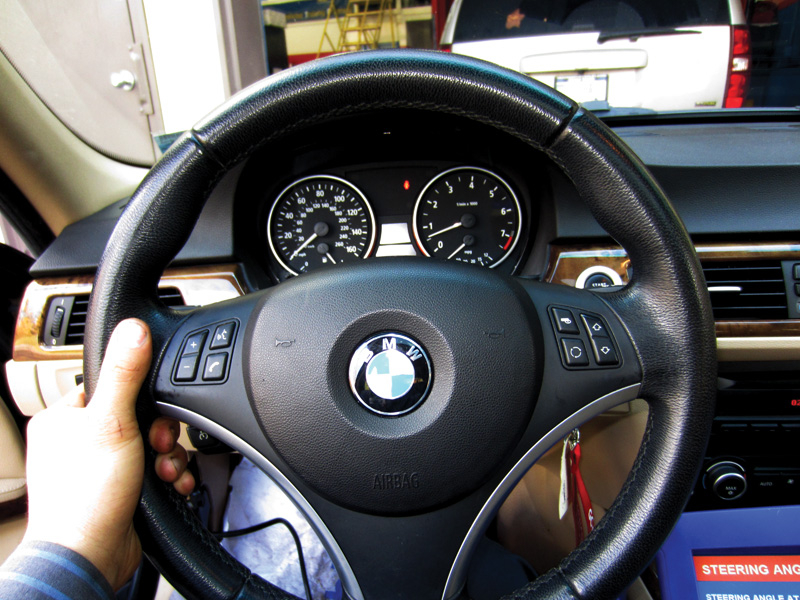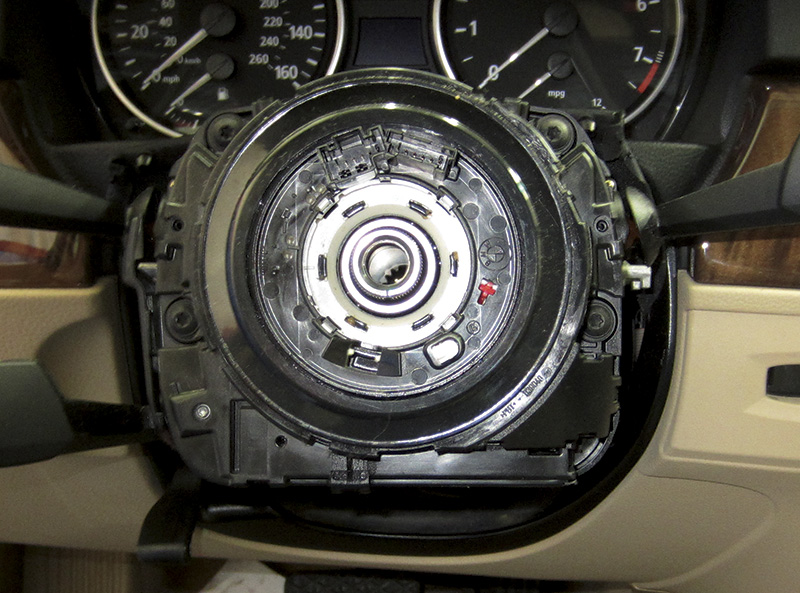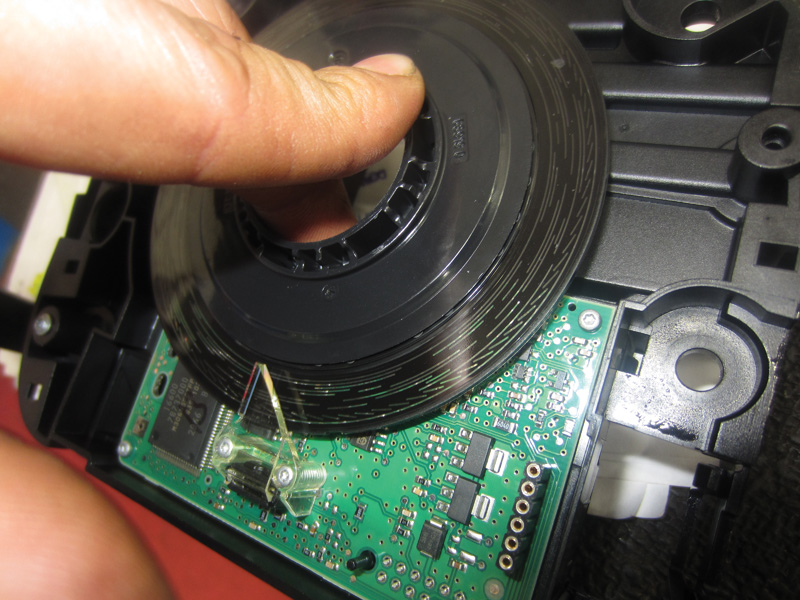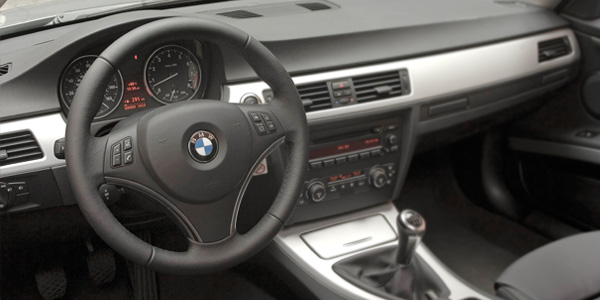
A regular customer brought in his 2007 BMW 328XI E90 because the “lights” were illuminated. We asked which lights. He told us that the traction control, 4×4, and brake dashboard warning lamps were all on at the same time, but that they went out after the key was turned to the “Off” position. Obviously, some troubleshooting was in order.
As Murphy’s Law would have predicted, when the car was started and driven straight into the back of the shop, none of those lights were on. Since BMWs store history codes, we concluded that a full system scan would be a logical first step. These days, the quick test is becoming a “must do” because there are so many modules connected to different networks that problems can be interrelated.
Very often, a quick test shows that some modules have issues or faults classified as “sporadic,” meaning the errors do not happen all the time. The appearance of such codes may be a warning of an upcoming fault, but are often part of normal operation, meaning these codes exist on a permanent basis and do not reflect a problem. We like to call these “ghost codes.”
Right turns only?

When checking the steering angle PID on your scan tool, make sure that the steering wheel is arrow-straight. You should see 0 degrees.
After we saved the code information, we cleared all the faults and drove the car to see if any hard codes would come back. It didn’t take long to find out that if we made hard right turns, the Dynamic Stability Control (DSC) module showed three codes that were “stored.” They were 5EBA Steering angle sensor plausibility, 94BB Steering angle sensor: internal fault, and 94B5 Steering column switching centre: internal fault. When most technicians working under the gun see these codes, they immediately condemn the steering angle sensor. This is not really such a terrible diagnosis because when a module sets an “internal fault” DTC, the usual cause is simply that, an internal fault. However, the wrong year sensor or connectivity issues can also set internal fault codes, though this is rare.
When we called the dealer and heard that he actually stocked the steering angle sensor and wouldn’t have to order it, it became apparent to us that this represented a pattern failure on E90s. The part, however, costs $525. Do you want to take a $525 gamble? For those of you who aren’t big gamblers, what we are going to cover here is how to be sure the culprit is really the steering angle sensor itself, and not some problem elsewhere in the system before you risk that considerable amount of money.
As always, basics first
As any successful technician will tell you, the first step should always be to cover the basics. Check the mechanical integrity of the vehicle. Inspect the front end for ripped bushings, look for bad control arms, and make sure different/wrong tire sizes aren’t present. Also, test the battery, look for ripple voltage from the alternator, and always check for TSBs through your subscription to BMW TIS — aftermarket databases sometimes lack details and are commonly out-of-date. In this case, all the basics were good.
Keep in mind that if you have a weak battery, or any previous repairs that involved disconnecting the battery were recently done, you will have to perform a “steering angle sensor recalibration or relearn.” This is where we started our diagnosis. It is recommended that you re-learn the steering angle sensor with a factory or BMW OEM-enhanced scan tool, such as the Autologic. When you go through the steps of the steering angle relearn, make sure that the steering wheel is as straight as an arrow. When you do this, the steering angle PID should be as close to 0 degrees (out of 360) as possible. As you can see, the PID for the steering angle here was at -1.98 degrees.

With the steering wheel of this 328XI E90 perfectly straight, we were not reading 0 degrees. Relearning produced 0, but it went out again on the test drive.
Still suspecting the part

After removing the air bag and steering wheel, the multi-tasking SZL switch cluster is almost ready to come out — just four more fasteners.
The fact that we could not get the steering wheel very close to zero with the wheel straight ahead made me very suspicious because this is typical of a bad sensor. When we turned the wheel to get it to zero, it would obviously be off true straight-ahead. After the relearn, the steering angle sensor became 0 degrees. Nonetheless, after driving the vehicle and before coming back to the shop all the lights came back on with the same codes and the wrong steering angle.
Before making the assumption that there was a problem with a hard part, we tried coding the DSC module and recalibrating the sensor after the previous coding procedure, but, again, after my test drive (including a lot of hard right turns) the lights came back on.
Now what? Just change the $525 sensor? Wrong. In many similar cases, it’s time to break out the labscope and check powers and grounds to the sensor. On newer BMWs, the wiring and connectors don’t lend themselves to easy scoping, so we felt it was more time-efficient to physically inspect the steering angle sensor itself. Yet another approach is to look for intermittent drop offs in the steering angle PID when you turn the wheel as read on your scan tool, although we are not fans of this because sometimes the tool does not always graph quickly enough to pick up a drop-off, and the Autologic doesn’t even have a graphing function.
Components involved

You might be surprised to find so much technology and so many functions in one component. The SZL switch cluster comprises LEDs, an encoded disc, a line camera, the clock spring assembly, and the turn signal, cruise control, and wiper switches. What we’re interested in here is the condition of the encoded disc.
In order to take any of these approaches, you need to understand how this system works. BMW has an interesting set-up, which has several different peculiarities depending on the specific system you’re working on. So, we’re going to talk about the system in general. BMWs may use a steering angle sensor behind the steering wheel, a cumulative steering angle sensor attached to the rack and pinion, a DSC module, and an AL (Active Steering) module, all connected to each other through the F-CAN line.
The cumulative sensor attached to the rack and pinion sends a signal to the AL module that indicates the exact position of the steering rack. If an alignment was done, or for some reason the signal was lost, it would need to be recalibrated in its own right (this is in addition to the steering angle sensor recal). If you are not sure if there is a cumulative steering angle sensor present in addition to a regular steering angle sensor, just remove the car’s bottom cover and inspect the rack and pinion where the steering shaft connects to it. If there are no signs of an additional sensor, then you are working on a vehicle with only a DSC and steering angle sensor. Stay focused on that, or, if you use your scan tool, try to communicate with the AL module. If there is no communication, most likely it does not have the cumulative sensor.
The E90’s is a simpler system with just a steering angle sensor and a DSC module. To recap, we already tried calibrating the sensor twice and coding the module once, but with no success. The way we diagnosed this car was through understanding how the sensor actually works.
Camera work

Rotating the encoded disc and examining it carefully revealed the surface damage that was disrupting the optical signal and confusing the system. The only remedy was replacement of the whole SZL switch cluster.
The steering angle sensor consists of LEDs and an optical conductor. The conductor sends the LEDs’ light through an encoded disc into a line camera. When the light travels through the camera, the position of the LED light amounts to an analog signal that is stored in an electronic evaluation unit. This unit converts the analog signal into a steering angle signal the module can read. All of these different components are built into one unit called the SZL (the steering column switch cluster or center). Inside the SZL are also the clock spring assembly, turn signal switch, cruise control switch, and wiper switch. No wonder it is so much money!
Now, do you remember how all the lights came back on when the car was turned to the right? From our understanding of the system, the optical conductor on this E90 is picking up a weak amount of LED light through the encoded disc when turning to the right, confusing the electronic evaluation unit and setting all those codes. When we opened up the SZL, we found marks on the encoded disc, confirming our theory that this is where the signal was not being picked up by the line camera.
Since the rest of the encoded disc looked good, it made sense that we were able to relearn the steering angle even though the sensor was indeed bad. The system apparently forgets the correct steering angle when the proper data is not sent to the electronic evaluation unit when the wheel is in some particular position. With this little bit of knowledge and some visual inspection, we could feel better ordering a $525.00 part, and save time putting it all back together without ever whipping out a labscope.
After installing the new steering column switch cluster, we coded the DSC module again. The steering column switch center is coded automatically when you code the DSC with your scan tool. Then, you re-learn the steering angle one more time and clear the codes. When we road tested the vehicle, being careful to take several sharp right turns, the lights did not come back on and the repair was good.
Special note to the techs out there who work under the tyranny of the clock: The removal and replacement of the steering column switch cluster is not tough. Simply disconnect the negative battery cable, remove the airbag, steering wheel, connections to the SZL, and then the four screws that hold the steering column switch cluster. No special tools needed to do this job.





0 Comments